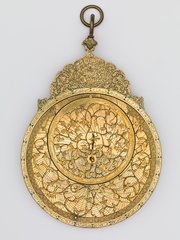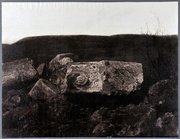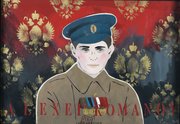
Priming Flask
Museum of Islamic Art
- Title:
- Priming Flask
- Production place:
- India
- Date:
- 1600 - 1699
- Period:
- Mughal
- Title:
- Priming Flask
- Production place:
- India
- Date:
- 1600 - 1699
- Period:
- Mughal
- Material:
- Ivory, Metal, Glass
- Technique:
- Carving, Incising, Hammering
- Dimensions:
- 5 × 27.5 × 8 cm
This fine powder flask is carved from ivory, with its delicately executed decoration accentuating the natural curvature of the elephant’s tusk. The priming end depicts a leopard attacking an antelope flanked by a pair of rams’ heads, while the remainder of the flask is carved with a variety of overlapping animals including elephants, leopards, monkeys and heads of buck and antelope. This powder-horn held fine-grain gunpowder used to set off (or prime) the main charge in the gun’s barrel. Gunpowder, a 3rd century AH/9th century CE Chinese invention, spread through most parts of Eurasia by the 7th century AH/13th century CE and arrived into the Indian subcontinent through Mongol Turks in around 802 AH/1400 CE. It was the use of gunpowder that allowed the founder of the Mughal Empire, Babur (887-937 AH/1483-1530 CE), to defeat the Delhi Sultanate ruler Ibrahim Lodi in the decisive battle of Panipat in 932 AH/1526 CE, laying claim over the territory and officially establishing Mughal rule (932-1274 AH/1526-1857 CE). The detailed decoration upon this powder-primer suggests its use by elite or royal members of Mughal society and was most probably used for royal hunts. The zoomorphic decoration of this primer takes inspiration from miniature paintings of composite animals, a theme popular for artists in the Mughal court at this time.


